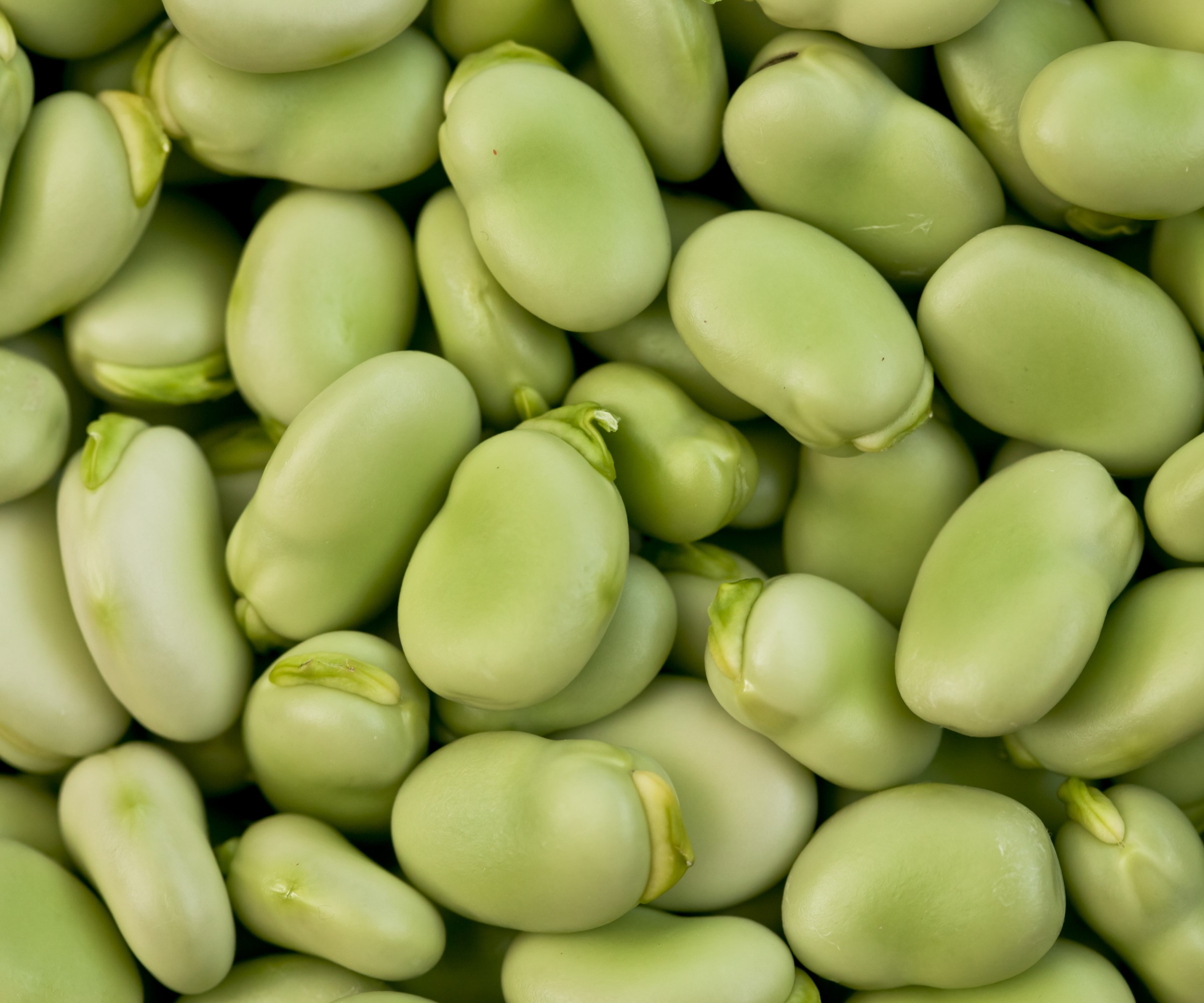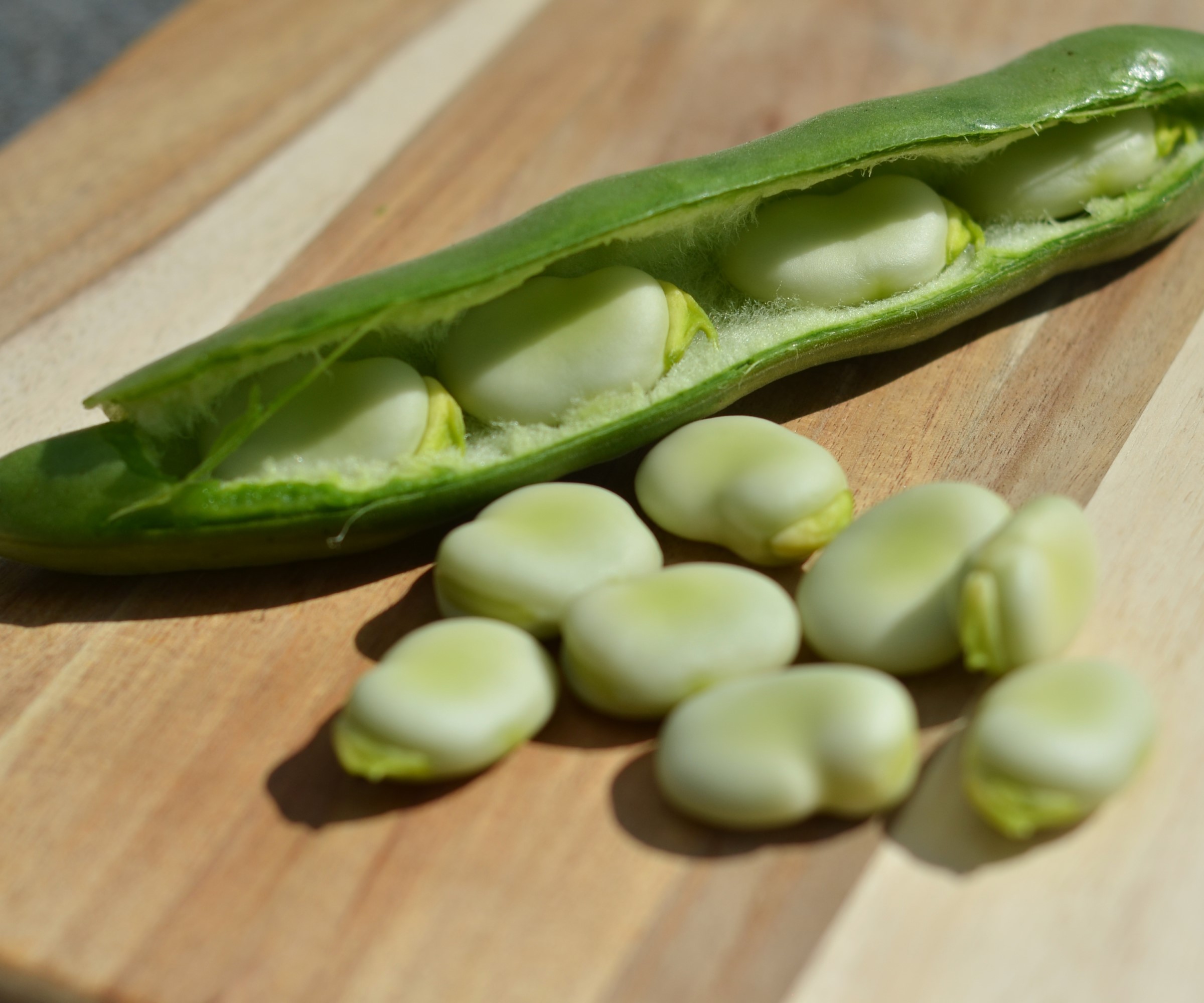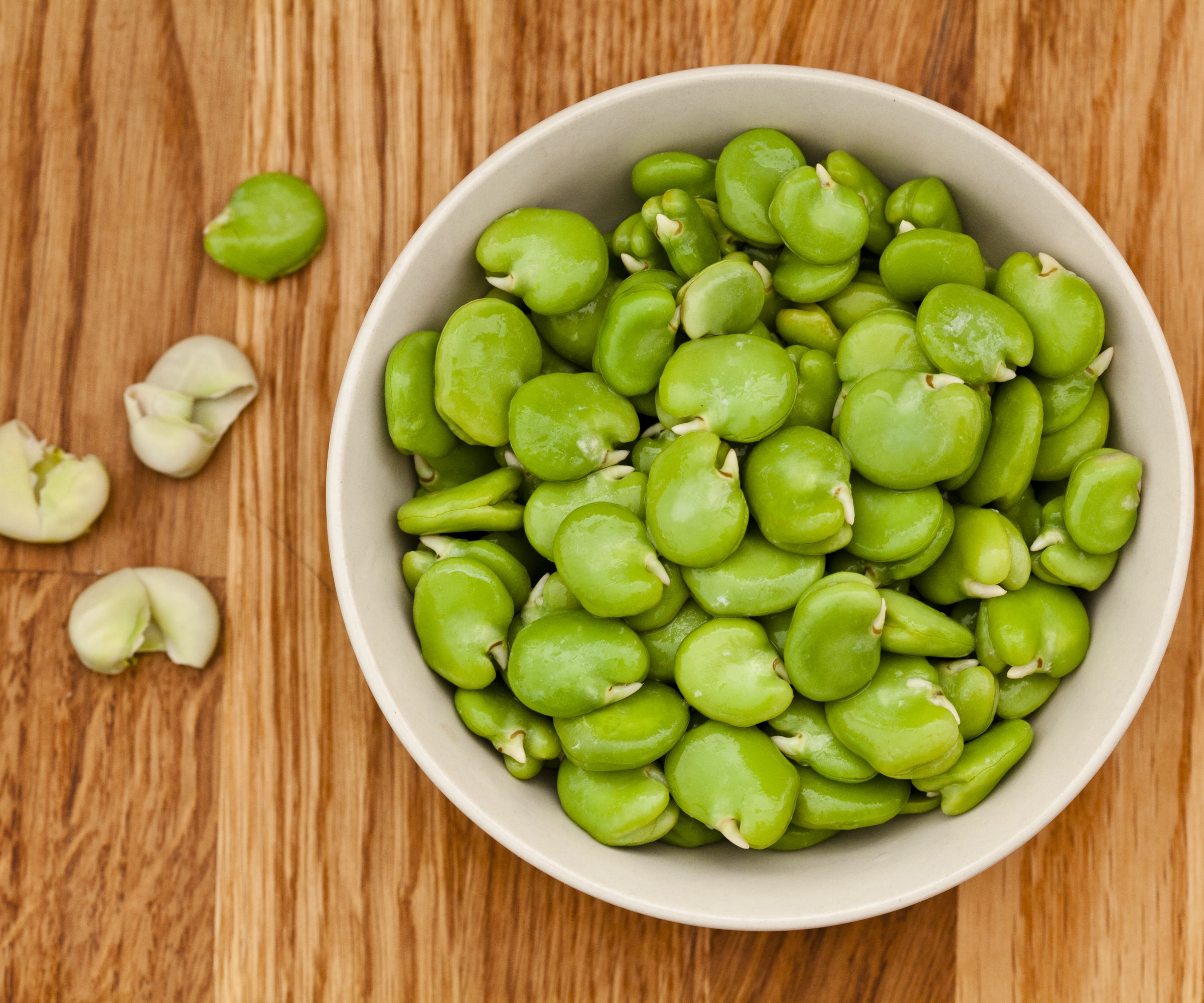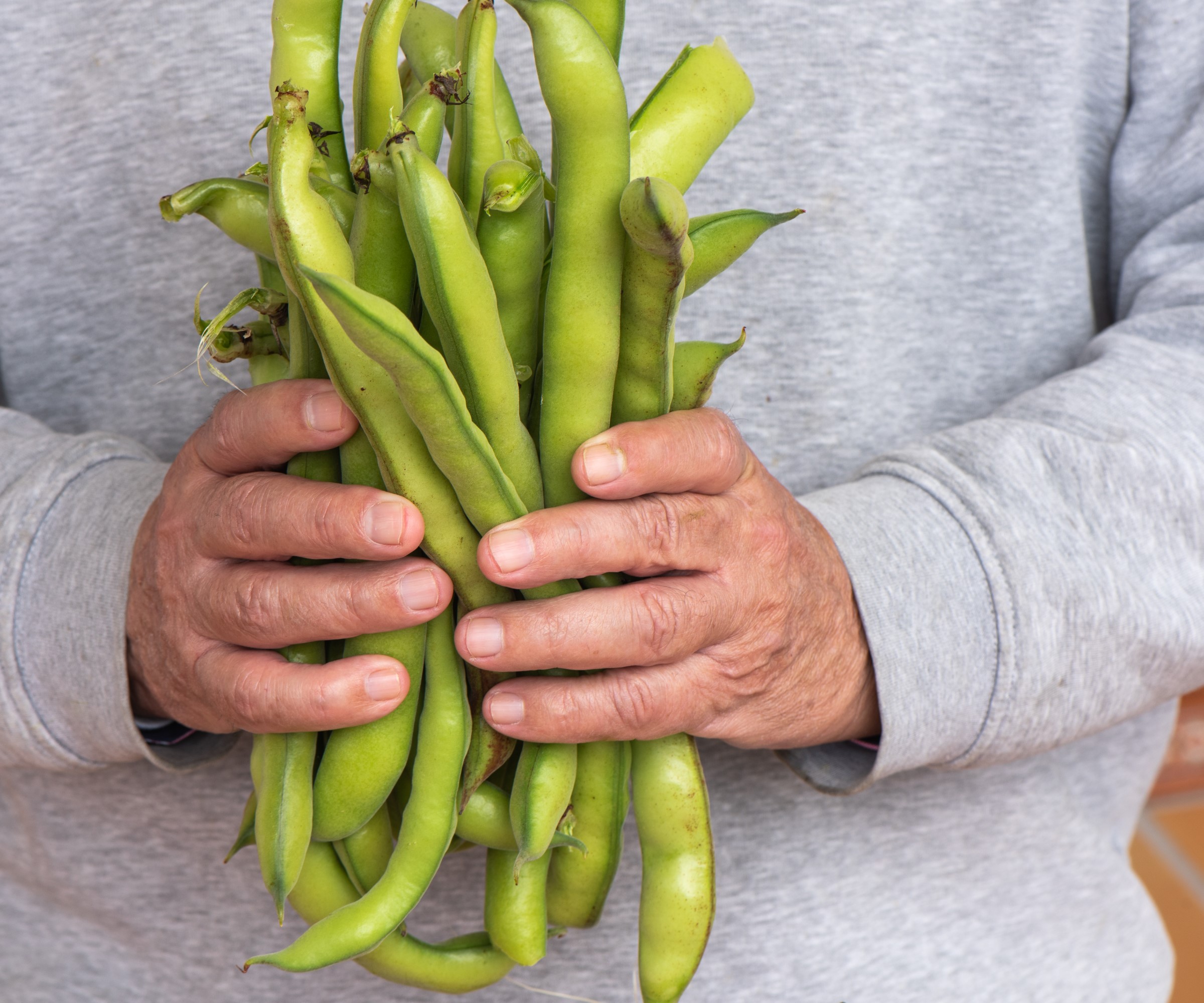Harvesting fava beans is all about timing and technique – this is what I've learned from my years of picking them
Whether you are picking young or mature crops, timing is key to getting the best tasting fava beans


Knowing how to harvest fava beans at the exact right time means having a keen eye, good timing, and getting hands-on with the plant. Plucking the pods from the plant is a simple twist and pull, but be too physical and you risk damaging the plant or pulling it out of the ground altogether.
Fava beans, also known as broad beans, are a popular and versatile crop that have multiple culinary uses. Small immature beans can be eaten raw, young pods can be eaten whole, and the mature beans are podded and used in many cuisines. Fava bean leaves are also edible and the tops of the plants, which are traditionally pinched out, are considered a delicacy.
Growing fava beans has always been an enjoyable experience for me. They were always one of the first seeds I sowed each growing year and one of the first spring crops in the kitchen garden. I also always relish the chance to eat fresh small beans straight off the plant.

Fava beans are often used in salads or made into dips

Drew is a former professional gardener who has grown vegetables in several kitchen gardens over the years. Fava beans have always been a staple crop in his productive gardens and he has grown the crop both for chefs and to sell to the public.
What time of year do you harvest fava beans?
Fava beans are ready to harvest from mid-spring to the middle of summer. This will be dependent on when the crop was sowed, the variety, where it was grown, and the climatic conditions.
There are different methods and timings available for planting fava beans and fall sowings of hardier varieties outdoors will be the first ready to be picked from mid-spring onwards. Crops sown in the fall can take up to 30 weeks to go from sowing the bean to harvest, while this timeline can shorten to around 12-15 weeks for seeds sown in the spring.

Each pod tends to contain four or five beans
What are the signs that fava beans are ready to be harvested?
There are different ways to eat fava beans and they dictate at what stage in their lifespan the beans are harvested.
Young pods can be harvested to eat raw at under 2 inches and the small immature pods at 2-4 inches long can be picked, cooked and eaten whole.
Design expertise in your inbox – from inspiring decorating ideas and beautiful celebrity homes to practical gardening advice and shopping round-ups.
For shelling, the pods are left to grow larger and the signs that a fava bean is ready for harvest will be the look and the feel. The pod will look completely full with the beans clearly visible. If you give them a squeeze and they also feel full, they are ready.
Lucy Chamberlain, vegetable growing expert for Amateur Gardening, advises that timing is crucial when it comes to when to harvest mature fava beans.
She recommends: 'When broad beans just start to fill out their pods, this is when you pick. Too soon and you risk receiving minimal yields – too late and broad bean scars (the line where the seed joins the pod) turn black.
‘So, feel the weight of the pods, very gently squeeze the contents inside, and, in doing so, become a bean harvesting master. If you do pick them when they’re too old, you can salvage them. It’s the outer skin that tastes bitter – the bean inside remains quite flavorful.’

It is a good idea to remove the skin off older fava beans
How to harvest fava beans without damaging the plant
The beans at the base of the plant ripen first and will therefore be the first to harvest. Start harvesting the lowest pods on the plant and work upwards as they mature. Each one should come off by twisting the pod and gently tugging the stem until it becomes unattached.
Care should be taken not to pull the pods too hard, as this risks damaging the stems or even pulling the entire plant out of the ground. Doing irreparable damage to the stem will prevent any pods further up the plant from ripening fully. If the pod does not come out with a downward twist and a gentle tug, consider using pruning shears – such as the Fiskars micro-tip pruning shears at Amazon – or scissors to remove the pod from the stem.
Fava beans need to be regularly harvested to keep them at their best. A regular picking of fava beans every few days out in the vegetable garden will encourage other pods on the plant to ripen and more to grow.

Take care when harvesting not to damage the stems
Can you eat fresh fava beans raw?
Fava beans are safe to eat raw and the beans can be eaten uncooked when they are young and small. When the small beans are under 2 inches they are perfect for a quick sweet snack while out in your backyard, plot, or small vegetable garden. Raw fava beans are a good source of vitamins, nutrients and minerals. This includes vitamins A and C, iron, potassium and calcium.
Larger broad beans are commonly steamed or boiled. The older beans tend to develop a tough and bitter skin that is often removed after cooking. These beans are not as suitable for eating raw as they do not come with the sweetness that can balance out the bitterness of the outer layer. It is recommended to thoroughly clean all fava beans after harvesting and before consuming.

Drew has worked as a writer since 2008 and was also a professional gardener for many years. As a trained horticulturist, he worked in prestigious historic gardens, including Hanbury Hall and the world-famous Hidcote Manor Garden. He also spent time as a specialist kitchen gardener at Soho Farmhouse and Netherby Hall, where he grew vegetables, fruit, herbs, and cut flowers for restaurants. Drew has written for numerous print and online publications and is an allotment holder and garden blogger. He is shortlisted for the Digital Gardening Writer of the Year at the 2025 Garden Media Guild Awards.